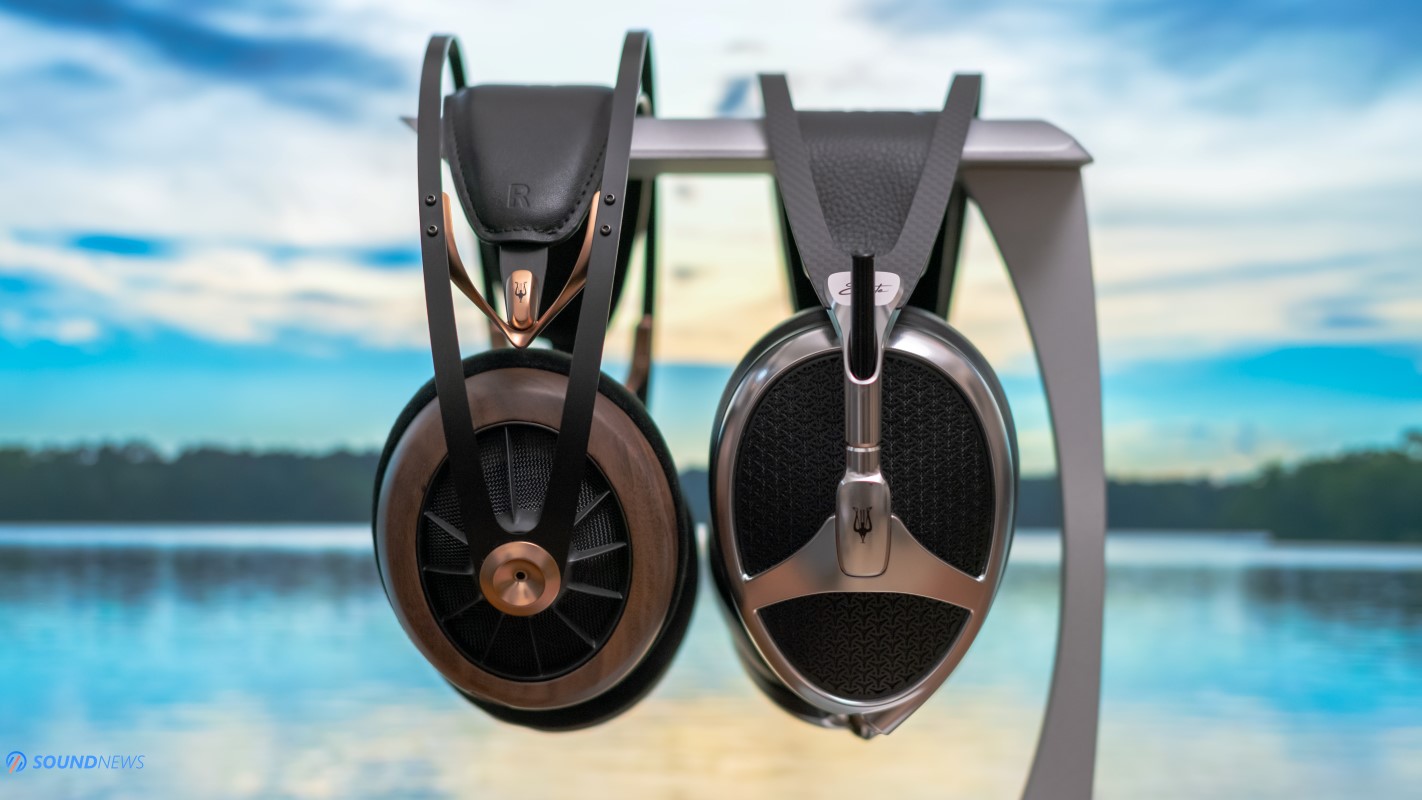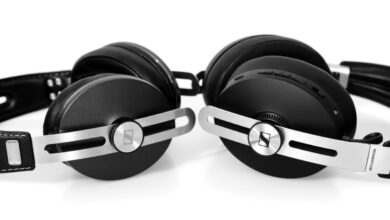Recalibrate Your Ears – Meze 109 PRO Review
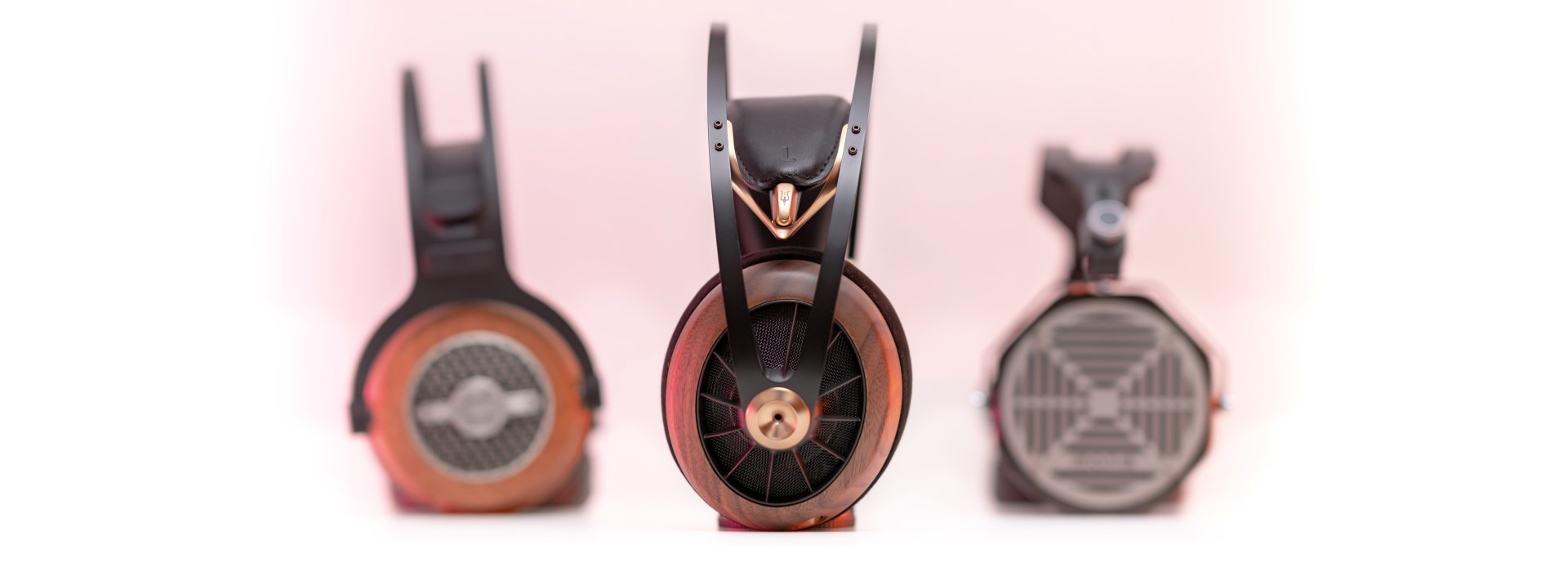
My Video Review:
Hi everyone, you probably didn’t miss me in December, but as I was slowly recovering from a nasty flu that glued me to a bed and shut down my hearing abilities, I realized how much I missed doing my job, listening to freshly released tunes, writing down sound impressions and reading your comments around here.
I should apologize for not posting new content last month, but what felt as a curse at first became a blessing, spending precious time with my loved ones…which I sadly ignored last year. When I’m going deep with my work nothing will stop me, but I won’t do the same this year and I won’t bother you with world’s longest written reviews, focusing mostly on core values what makes a product interesting and desirable.
Today I’m going to write about a headphone brand that is close to my heart from multiple points of view, one being that I’m Romanian and I feel proud when people are adding fire and passion in everything they do. If there’s a headphone brand that takes seriously all the feedback, that tries to correct every misstep and wrong decision done in the past, then that’s surely Meze Audio. They wanted to be heard, to be seen and taken seriously and while they didn’t win me over at first, I felt massive sound improvements reflected in their newer products, which were considerably more technical sounding than ever before. I remember the chills when I first saw the Meze Empyrean that are still the best-looking headphones out there and I have similar thoughts about their newest 109 PRO.
When I was still roaming the halls of Munich High End-Show 2022 back in May, a member of my team suggested trying a Meze 109 PRO prototype. A high-end test bench was prepared in advance and a few minutes later I understood why my colleague was raving about them. I exchanged a few words with their creators, but the body language of Antonio and Mircea sent more signs than any of their words. These guys were radiating positive energy, they deeply cared about their creation as in many ways…you’re witnessing their very first 100% in-house developed cans, but more on that later. Although I was among the first ones to try out their brain child, it seems that I’m a little late to the party, but don’t you worry, I’ll add plenty of chapters dedicated to sound quality, detailed measurements that will expose everything and for fun, I’ll throw a couple of interesting comparisons. Meze’s 109 PRO are no longer road-opening cans like their 99 Classics were back in the day and while they look more or less the same, I assure you that nothing will resemble the sound of their closed-back siblings. Meze’s latest headphones will set you off $799 in the USA and €799 in the Europe and let’s find out if these are worth it or not.
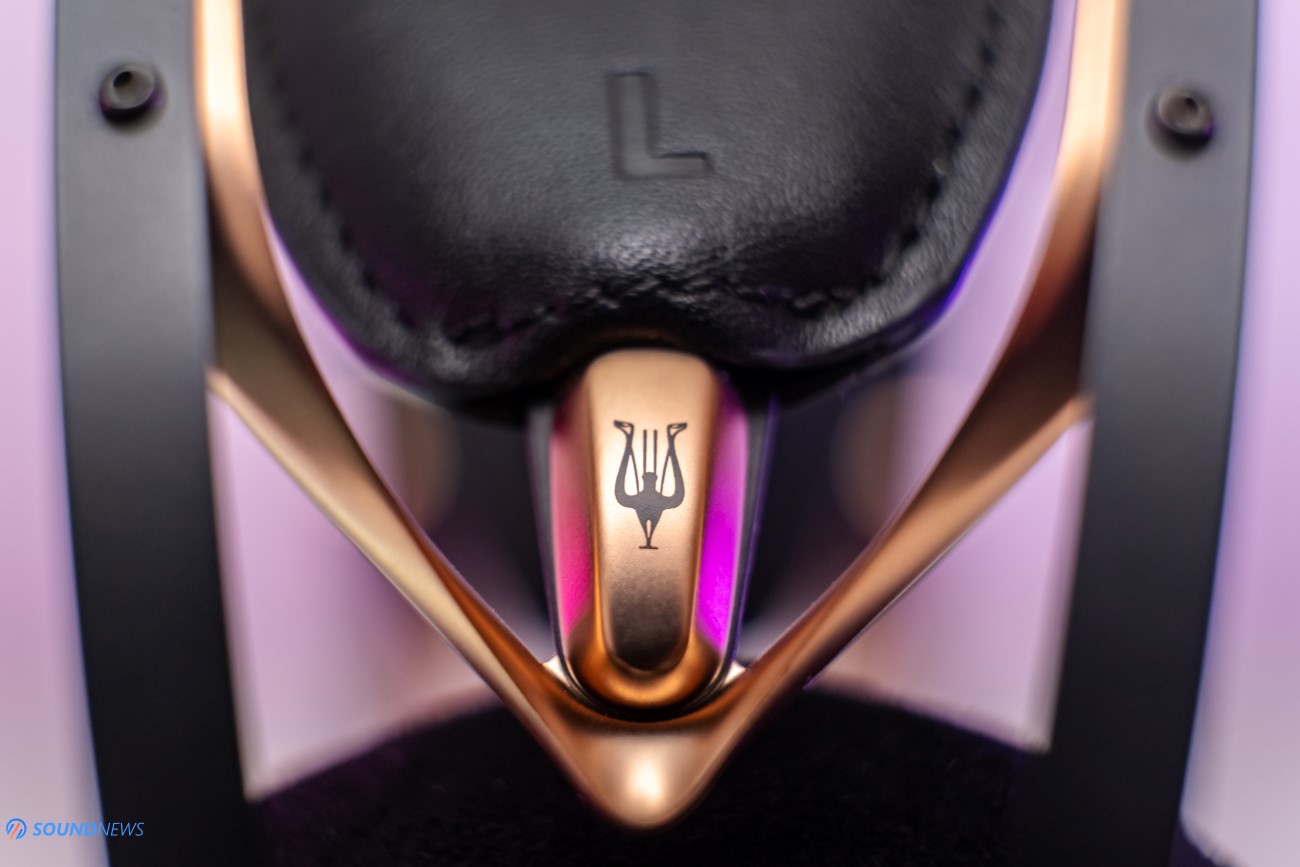
Design & Build Quality
Before starting his own adventure, Antonio Meze worked as a designer, crafting all kinds of stuff, from glass bottles to much more elaborate & time-consuming creations. When looking at 109 PRO you can feel that a craftsman and a designer shaped their lines. I love mathematics and everything that’s symmetrical has sense to me. They look beautiful to a naked eye and I deeply appreciate their symmetrical look and high levels of comfort.
While they resemble the look of the 99 Classics, these are a major step up in terms of build, sturdiness and comfort levels, looking simple yet sophisticated at the same time. After inspecting them closely, I’m realizing that everything bonds together in a clever fashion and if 99 Classics looked fashionable and modern, then 109 PROs are looking like a limited edition where everything bonds nicely together.
We no longer have an ivory look or gold accents (which I didn’t like that much), going with an understated color scheme as black, walnut brown and copper, reminding that an engineer and a designer left big marks on these.
109 PROs are also bigger in size compared to their closed-back siblings, no longer regarded as on-ear desktop headphones and more like proper full-sized headphones, hugging entirely your hearing apparatuses for a lower ear pressure and for a better long-term comfort.
Even if 99 Classics were easily serviceable with home tools, I couldn’t get over their loose fit earcups after a single month of use. There was an unwanted “play” in between the cups and cup holders that made the whole structure wobbly at times. Everything I disliked about 99 Classics has taken care of and I can no longer complain about their look, build quality and comfort levels.
These are using a similar frame that’s strong, lightweight, good looking without having rods or screws to be adjusted. You just put them on and they will automatically slide down, without adding pressure on top of your head or around your ears. My melon is bigger than usual and I presume that people won’t bend their frame for a stronger clamping force, these are already staying perfect as they are.
Even if these are heavier by 115 grams compared to their closed-back predecessors, at 375 grams these are fairly light by desktop headphone standards, scoring huge points in terms of comfort as I have no desire to bend their headband or mod them in any way. Overall, their build quality is top notch and so is their comfort level and there’s nothing more to be added.
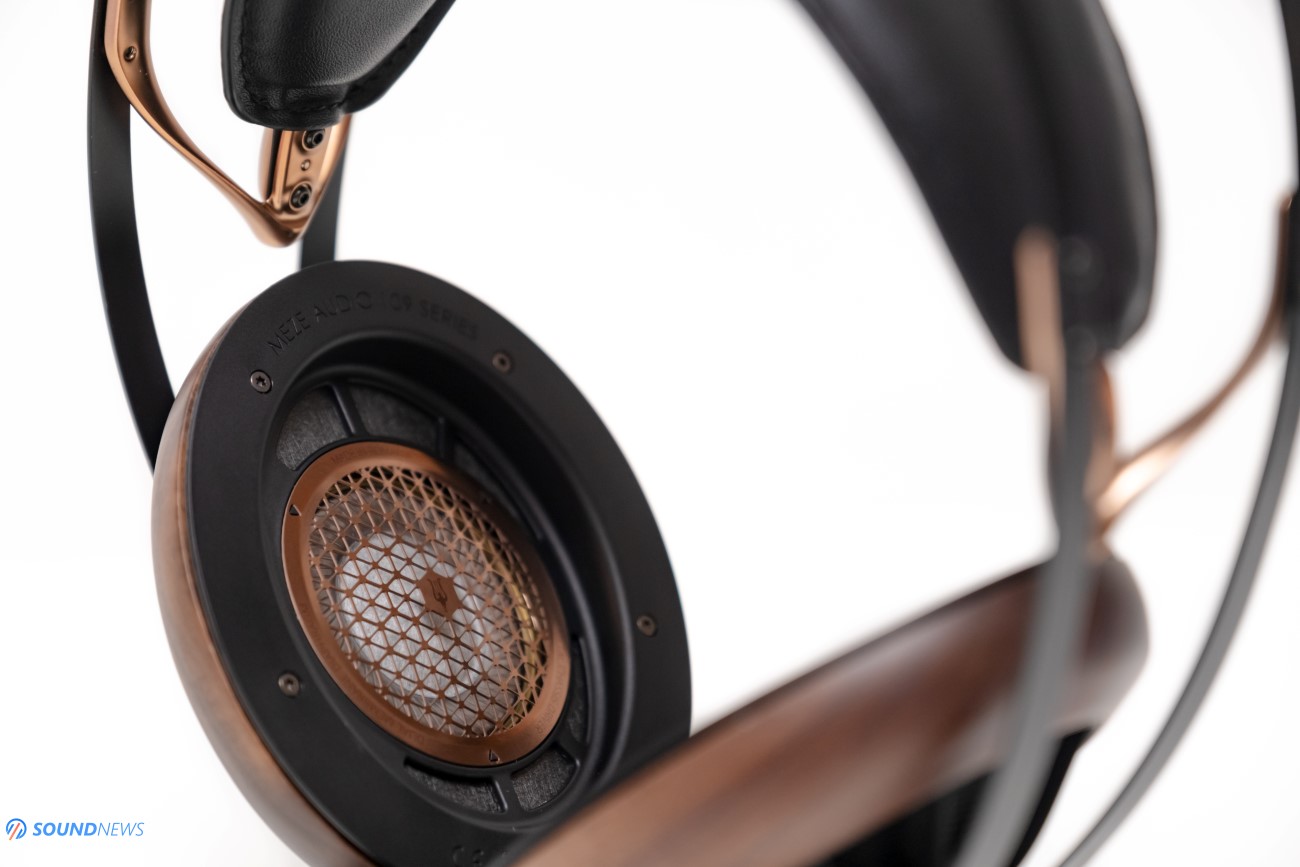
Tech Inside Meze 109 PRO
Although Meze Elite is their flagship headphone, I won’t be surprised if 109 PRO is their favorite child, as from start to finish, everything was developed in-house in Baia Mare, here in Romania. That’s right! Including a brand-new Dual Composite diaphragm that bonded together a Beryllium-coated polymer and a cellulose-carbon fiber composite into a single driver.
When 99 Classics hit the market, I found them competitive at their respective price point, even if they weren’t exactly fast or clean sounding. Every time I met Meze and their team of nerdy geniuses, I was always repeating the same words over and over again: “You need to make them faster, clearer and more resolving.”
A fast transient response, a good clarity and definition will always come from a lightweight yet rigid driver and that’s the game Meze was playing for a few years now, trying to find a perfect balance between mass and stiffness.
Made from a carbon fiber enforced cellulose composite, a newly made W-shaped dome is able to reproduce high-frequencies with incredible detail, clarity and definition. It’s more durable versus conventional dynamic drivers, yet lightweight that helped reducing resonance that may lead to a higher harmonic distortion. Instead of going with 40 mm drivers that are siting in 99 Classics, Meze went with larger 50mm drivers that will move higher quantities of air for a bigger soundstage, for sharper spatial cues, for a clearer stereo imaging and for nicer dynamics. If you look closely, you can observe a spider-shaped structure and acoustically transparent grills on the outside that will expose the drivers from both sides, creating their most open pattern to date, which should leave a positive mark on the sound quality.
With an impedance of 40 Ohms and a sensitivity of 112 dB per a single mW of power, you will drive these with pretty much anything that has a headphone jack, but more about this in a dedicated chapter. Still, a high-quality source will provide a nicer detail retrieval and that’s why dedicated electronics will sound better. Make sure to use a dedicated portable DAP, a USB dongle or a proper desktop setup consisting of a desktop DAC and headphone amplifier.

Sound Performance
I. Preliminary Impressions
After listening to them for a few weeks, my very first thoughts were that nothing resembles the sound of the 99 Classics. It’s a paradigm shift in everything we know about the 99 Classics, going with a brand new, re-imagined tuning. This will pleasantly surprise veteran audiophiles like myself, but could upset a few others that still desire for a warm, cuddly and inviting sound that rolls-off big portions of the upper treble.
Knowing that Vlad Ţoca (a prodigious drummer of Dirty Shirt’s folk-metal ensemble) was behind its tuning, I wasn’t astonished hearing a much better treble delivery in all regards, starting with speed, timbre and finishing with clarity and shimmer. There’s a massive upgrade in terms of clarity or detail retrieval as I like to call it, like listening to a super-charged version of 99 Classics. People loved their very first desktop headphone mostly because it was unusually warm, seducing and relaxing to listen to. On the other hand, 109 PROs feel like a 180 degree turn to what 99 Classics stood for. Besides a massive upgrade in detail retrieval and transparency, there’s a much better frequency extension at both ends, closer to flagship material. I no longer feel a blown-up belly in the mid-bass and midrange regions, going with an even frequency response across the board, there are no longer dips in the lower and upper treble, suggesting a reference tuning that will reveal a lot more information to the listener.
Another pleasant surprise was getting a believable soundstage, perfectly arranged for the listener. It was expanding with reference recordings and closing up with cozy jazz & progressive rock. 99 Classics weren’t that bad, but the sound wasn’t breathing in and out as easily, creating a constant stage size that didn’t increase or decrease depending on the music. As a point of comparison, 109 PROs will feel like a breath of fresh air, with sounds escaping your head and playing at an arm’s reach, something that usually happens with pricier open-back planar-magnetic headphones.
As time was passing by, it was clear to me that 109 PROs won’t WOW you at first, as nothing stands out, nothing jumps into the light for prime time, nothing feels out of place, elevated or subdued. They will impress you later on, after realizing that end-game headphones are all targeting an honest, linear and expanded frequency response, without boosting a particular region.
The only thing that might tire you down is a slight treble itch in the first hours of use. This shocked me a little, mostly because their first-gen creations like 99 Classics, Empyrean and Rai Penta were very strong in the mid-bass and midrange regions, while rolling-off big chunks of the upper treble. However, 109 PROs are much more contrasting headphones, trying to cover our entire hearing range. If you own their Empyrean planars, then 109 PROs will feel as a clearer, more resolving pair of cans that are nimbler with fast and impactful tunes. Their first-generation IEMs and headphones were quite mellow and slow, gently pressing the brakes in terms of dynamics and I’m glad my words finally found their mark, as 109 PROs and Elite for that matter are no longer sluggish and mellow sounding. Their diaphragm will stabilize after a few hours of use and the slight treble itch will go away, still, if some glare remains then I recommend using a warmer/smoother sounding setup. Go with a hybrid amplifier if you listen to all and everything, go with a fully discrete Class-A amp if you are into speedy and aggressive music and go with a tube amp if you need all the richness and naturalness you can muster.

II. Power Requirements & Amp Pairings
When I created the Apos Caspian headphone, my first goal was a very-high sensitivity so that people would enjoy them even from low-powered devices, as smartphones, portable music players, Bluetooth dongles, laptops and tablets. Meze had similar ideas when crafting their 109 PROs, as at an impedance of 40 Ohms and a sensitivity of 112 dB per a single mW of power, these are the second easiest to drive headphones that are sitting on my headphone wall. 99 Classics were already easy to drive, but these are so much easier to push to their limits, that you won’t need a desktop headphone amplifier for head-crushing sound pressure levels of 110 dB or higher. A desktop headphone amplifier will improve their dynamics, will have a better control of their drivers, you can expect faster decays with electronica music and longer decays with blues, other than that you’ll do just fine with a portable DAP or Bluetooth dongle.
Surrounded by a pair of Apos Caspian and Kennerton Vali, these are my top three easiest to drive desktop headphones that don’t require amplifier behemoths as Trafomatic Primavera for the best results, but they will still benefit from dedicated amps as I mentioned above.
You can easily drive these with USB-C dongles, Bluetooth gizmos, portable DAC/Amps combos or regular DAPs. I tried them with a bunch of amplifiers, ranging from op-amps based, transistor and tube-based, but in truth those weren’t necessary, sounding marvelous even from a FiiO BTR7, Shanling UE5 and Qudelix 5K. Dynamics weren’t pressing the brakes, bass impact was still there, everything sounded effortless and tightly controlled. This seems like a positive chance of pace, fulfilling our HiFi needs straight out of a smartphone, something that 99 Classics weren’t doing so great.

III. Transient Response & Dynamics
I find them fast and dynamic sounding, going in and out in micro seconds and these will definitely keep up with fast paced music. However, these won’t bring the might of the thunder god when bass notes will be crashing down on you. I find them decently impactful and moderately punchy sounding, but not what I would call as mean and bold sounding. I did some experiments on my own, suspecting that the stock velour pads might be the culprit and sure enough, with hand-stitched leather earpads of Apos Caspian and Kennerton Vali, these brought a tremendous impact in the sub-bass region, at the cost of a narrower sound and less impressive treble extension.
Personally, I like them as they are, as when I want to rock out and head-bang – I would use their Elite with leather pads, maybe the Kennerton Rognir or the Hifiman Susvara put on mean sounding amplifiers and when I want to chill out and relax, then 109 PROs are filling that role pretty nicely. I want to be clear that with stock velour earpads there’s enough sub-bass extension and mid-bass definition, but the sound won’t scare you off as it might happen with planars put on big boy amplifiers. These won’t make your head move and your feet dance around, but there is still plenty of energy left, especially when dynamics are reaching crescendo moments. Crafting leather earpads down the road and selling them separately would be a great idea, similar to those of 99 Classics just bigger in size and thicker. Meze already does that with Empyrean and Elite and I think it would be a clever move to have them on 109 PROs as well. With two distinct pairs of earpads, 109 PROs could appeal to a wider audience, covering all musical genres, including aggressive ones.

Here’s a graph that will tell you more about their frequency response with the stock velour pads versus Apos Caspian leather pads. Sub and mid-bass energy went up by about ~5 dB and there’s a mild drop at 8.5 kHz by ~4dB that makes them less itchy in the treble. There are a few things that cannot be measured as the soundstage size and imaging, which subjectively speaking were less impressive on the leather earpads.

IV. Soundstage & Depth
Now here’s the real kicker and one of the few things that will impress you right away. The scale or the so-called soundstage is literally twice the size compared to 99 Classics that always struggled pushing the sounds outside my melon. These aren’t shooting for the top spot and these aren’t exactly at Sennheiser HD800S level, but these will definitely challenge their own Empyrean or Elite put on leather earpads.
When Antimatter’s A Profusion Of Thought (Qobuz / Tidal) started playing, dark and atmospheric vibes started crawling under my skin, feeling a well-spread sound that never imploded inside my head. The saxophone, together with piano, acoustic and electric guitars slowly set the mood for the whole album. At the ~4-minute mark everything exploded in a crescendo moment, yet remaining clean and defined without bumping musical notes into each other. The drum work wasn’t as clean as I am accustomed to, but that’s not their fault, mastering engineer is to blame that didn’t clean up the mess. The fourth track Templates, started playing with my imagination from the very first notes. Driven by a hypnotizing synth bass-line, I found it haunting at times. While it starts slowly with a creeping melancholy playing all around me, above my forehead and below my chin, it exploded in a tsunami of sounds that completely overwhelmed my body at the ~4-minute mark. This track is the true definition of soundstage and imagining, opening my third eye and unlocking my imagination like no other track did this day. So, Hell Yeah! 109 PROs aren’t only tonally correct, but also well spread to my left and right, above my sight and below my chin, creating this massive display of sounds that are popping in and out so vividly.
In this regard, 109 PROs are stomping over the 99 Classics without the right to appeal, easily outperforming my co-designed $500 Apos Caspian and even a pricier $990 Kennerton Vali and $1200 Erzetich Mania. There were only two headphones below the 1$k mark that stood their ground providing an equally impressive stage and those were the Hifiman Edition XS and Moondrop Venus planar-magnetic headphones.
If you love music inter-playing with your mind, always feeding your imagination with wild ideas, then Meze’s 109 PRO is an easy recommendation to make, always trying to escape from your head and play music at a lower or higher altitude, depending on the music.

V. Detail Retrieval & Transparency
These are no longer rolling off big chunks of information in the upper midrange, lower and upper treble. There’s a lot more going on, feeling a massive resolution gain versus their aging siblings – which felt lackluster to a point of being muddy and unresolving.
There’s a lot more information going to the surface and not only from the treble region. This time around the drivers are much stiffer, these are recovering faster, providing a natural note decay. These have a better timing and subsequently a better detail retrieval. The smallest intricacies are popping all around with 109 PROs, something that felt impossible on 99 Classics even when put on end-game DACs and headphone amplifiers. I find them so good in this department that several entry to mid-level planar or dynamic headphones will feel bloated and limited by comparison. For example, I find them clearer versus the Audeze LCD-2 OG or Classic, there’s more going on versus the Hifiman Ananda, Erzetich Mania and Kennerton Vali, which are no slouches or bad in any way. This is a chapter I’m most happy about, as I can’t stand a lack of resolution or a limited frequency response at both ends. The biggest issues of 99 Classics have been solved and that’s why 109 PROs are no longer entry-level headphones, but serious mid-rangers that will challenge plenty of headphones up to $2K mark.
Meze’s 109 PROs will show minuscule differences between sources and amplifiers and while that’s great and dandy, suddenly higher priced DACs and amplifiers will be sounding better, which might lead to an upgrade path down the road. As for me, I was ditching THX-AAA and NFCA amplifiers in favor of less-revealing units that would improve their tonality, would add more meat on the bones and relax me a little. These won’t sugar coat your music, staying truer to my recordings, but you can certainly make them colorful and vivid sounding with the help of hybrid or full tube amplifiers. In my case, I enjoyed them the most from a Trafomatic Head 2 and Primavera.
Epica and Apocalyptica are some of my all-time favorite bands and these guys just compiled a single called Rise Again (Qobuz / Tidal) which felt as an open window from the very first seconds. That brush stick gently touching a cymbal was so clear and defined, yet so far away from the rest of the musicians. Simone’s voice was piercing the veil filled with tens of instruments, as her voice was somehow avoiding powerful cellos, deep piano notes and raw guitars, always appearing crystal clear, so vivid and alive. Some pricier headphones like Erzetich Mania felt less transparent, as if a thin veil was laying on top. 109 PROs felt clearer and bigger sounding at the same time, sending a good deal of dopamine into my blood stream.
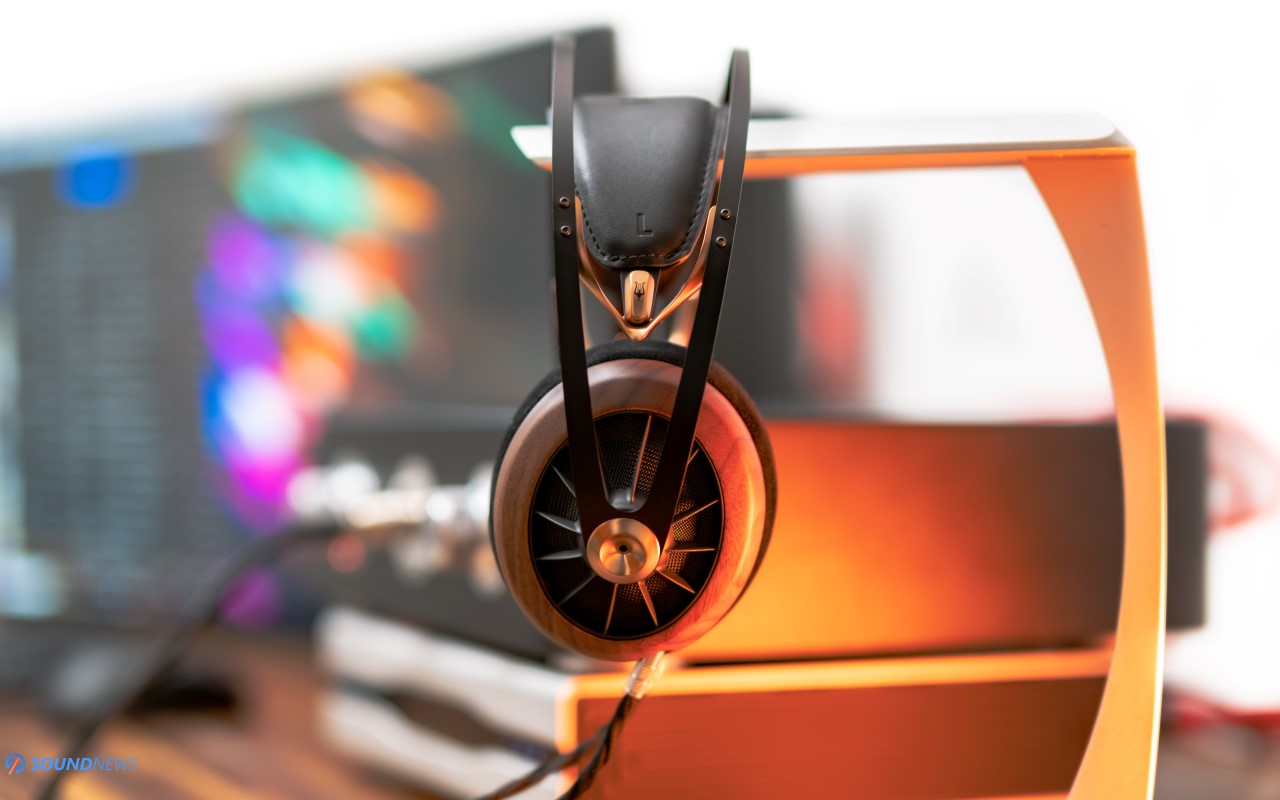
Frequency Response
VI. Bass
As my measurements will later reveal, 109 PROs are strong and impressive starting with the low-end. The whole mid-bass region is elevated by a few dBs, adding some fun that will make you move to the rhythm of the music. That slight elevation worked in their favor, adding oomph and fulness to the whole affair. As an open-back dynamic headphone, the sub-bass sees a gentle roll-off below 30 Hz, but that’s almost a trademark for open-back dynamic headphones, at least from the ones I tried so far. On the plus side, the sub-bass is way clearer and accurate compared to their direct competitors like Erzetich Mania and Kennerton Vali, reminding once again that we are dealing with a much more serious headphone. The whole bass region can be described as clean and fast sounding that lacks some punching power with deep reaching electronica tunes. If you are willing to experiment, I recommend trying leather earpads that will add more bass presence. These have a regular earcup size, meaning that most Beyerdynamic, Kennerton and many other earpads will fit them like a glove. Hifiman Sundara and Moondrop Venus earpads worked as well, slightly improving their bass delivery, at the cost of a less extended upper treble and stage size. Regardless of the earpads, these are delivering clean bass notes that decay naturally and it doesn’t matter if you’re listening to blues, classical or rock tunes, there would be plenty of bass notes to be felt. To me, 109 PROs are slightly more impressive when it comes to bass quality and less so when it comes to bass quantity, but as I’ve explained before, you can make them fun and impactful with the right earpads.
VII. Midrange
Probably the only region that doesn’t need an introduction on Meze headphones, additional tweaks or dedicated electronics to shine at its best is the midrange region. In the headphone world, midrange is a synonym with Meze Audio as all their headphones and IEMs have an impeccable midrange rendition and I mean it. Starting with 99 Classics, moving on to Empyrean, Elite and then to Rai Solo and Rai Penta, there wasn’t a Meze IEM or headphone that didn’t put goose bumps on my body when female singers reached higher peaks at loud SPL levels. 109 PROs are really no different as everything that has to do with voices, strings and woodwind instruments will shine brightly. While I won’t call them sweet, overly warm and smooth sounding, there are traces of that sound, putting the life back into your tunes in a blink of an eye. In all honesty, I listened mostly to blues, progressive rock and jazz on these, musical genres that blossomed and opened up their inner beauty. If the midrange is right from the get go, which covers most of the sounds happening in our daily lives, then everything else are little nothings. These are adding plenty of weight in here and you will feel that from the very first minutes. Think about a Meze Elite that traded planar drivers with dynamic ones…109 PROs are like that, just a little bit different. I used a Trafomatic Head 2 tube amplifier for the most part of this review as I wanted to hear a longer vocal cord vibration, a deeper vocal performance and a soul grabbing experience, which 109 PROs fully provided with the right selection of electronics.
VIII. Treble
My left eyebrow went way up when 109 PROs started playing treble intensive tracks, mostly because I never heard such an extended treble from any other Meze headphone. I’m still discovering the Elite as I am typing this, having just a few hours on them…but holy smokes! An extended treble delivery from a Meze Audio headphone feels almost like a miracle unfolding. A proper sounding headphone should have it all, from the deepest pits of sub-bass, to the highest peaks of the upper treble, flagship cans need to cover our hearing range in full…something that past Meze creations weren’t exceptional at. 109 PROs aren’t only way clearer, crisper and more extended past top octave, but there’s also plenty of shimmer and texture all around those cymbals and snares. There is more bite and a brighter spark and some might feel that these are leaning towards a brighter side, especially in the first hours of use. I tried them with a SMSL HO200 THX-AAA based headphone amplifier and it wasn’t one of the best pairings. Generally speaking, I would avoid ultra-linear and ultra-revealing amplifiers like HO200, SP400, Benchmark HPA4 and any of the NFCA doings of Topping. 109 PROs don’t need a helping hand in the treble region, as these are already showing way too much information in upper registers and the leading edges are already sharp as Damascus blades. Long story short, these are working better with all discrete amplifiers of all sorts, but especially with hybrid or tube amplifiers which are adding a sense of rightfulness and calmness.
While their treble delivery might look like a mess from a frequency response standpoint, there is nothing wrong with it, except from a mild rise in the ~8.5 kHz region, which went up by ~8dB from linearity. On paper that’s quite a jump highlighting the -S- sounds a little bit more, luckily it happens in a narrow frequency range that will affect only a few passages in treble intensive tracks.

IX. Meze 109 PRO Detailed Measurements
Alright folks, the time has come putting them under a magnifying glass. My main streamer and DAC for the job was Gustard’s excellent R26 Discrete that I was controlled via Roon, followed by a SMSL HO200 headphone amp that was doing all the heavy lifting. The measurement rig used was a MiniDSP E.A.R.S. calibrated with HPN (Original Headphone Compensation) files. Do note that E.A.R.S. is not following any known IEC standards and my readings can’t be used as reference measurements or anything like that. I’m doing them for fun, getting a general idea about their sound signature.
I have measured them in a sealed room for several times now, as I needed to match both readings as close as possible. No side-pressure was applied to the earcups, they stood still in their natural position.
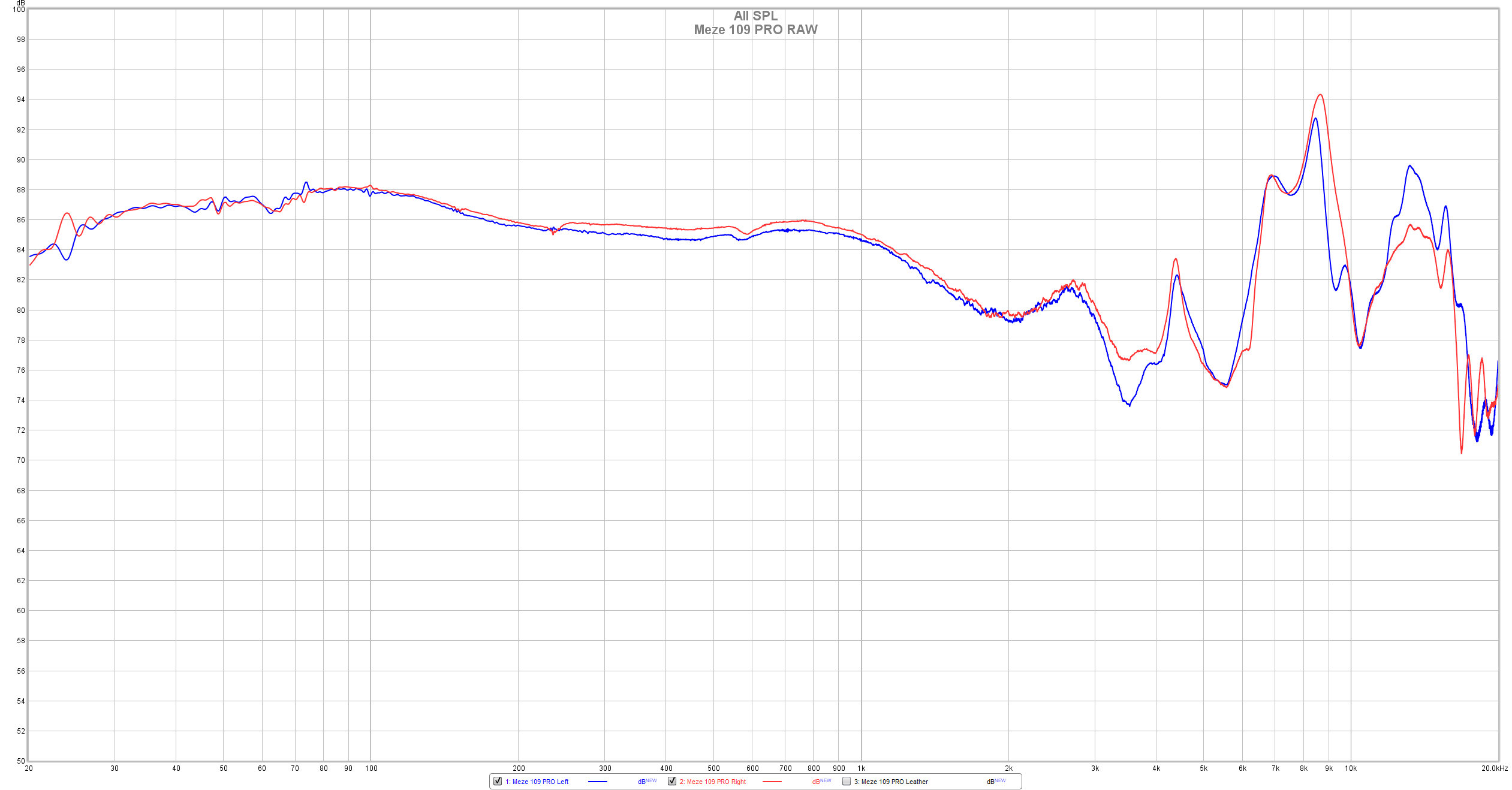
Take a look at their RAW measurements without any smoothing applied. Driver matching is phenomenal! Much better than most headphones I measured last year. Although I’ve seen better, those were by about ~4 to 7 times costlier than 109 PROs. There are some minor deviations in the treble, but those are negligible. Please note that I have zoomed this reading quite a lot, so you could better see all deviations in between 3 and 4 kHz and then between 12 and 14 kHz, but I couldn’t hear them while listening to music.
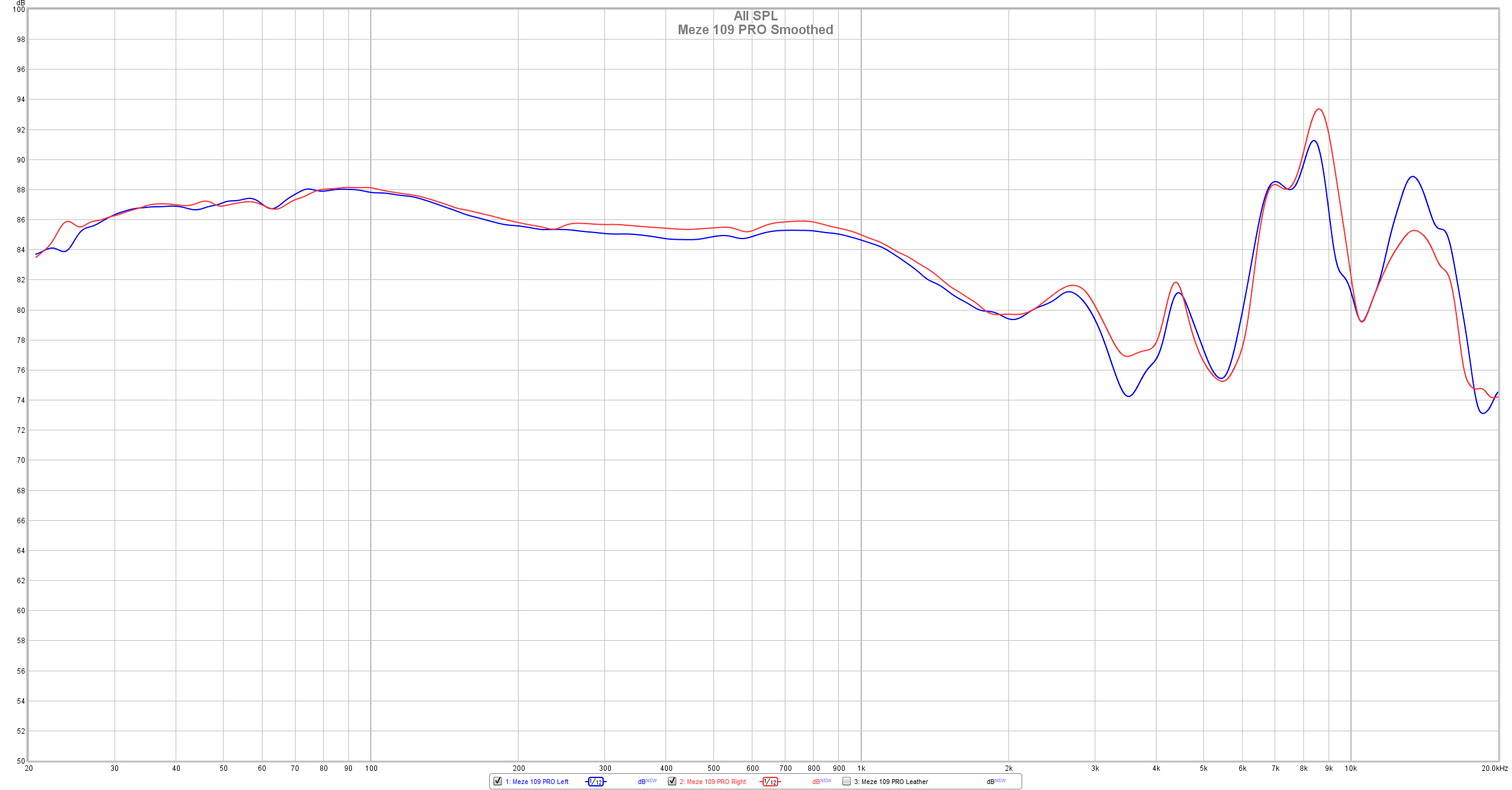
After applying a gentle 1/12 smoothing, I got a slightly different graph and as you can see, they offer a straight line from 30 Hz to around 1 kHz, suggesting an exemplary bass and midrange performance. You can see a minor roll-off in the sub-bass and another slope in the upper midrange, but that’s normal behavior, as most open-back headphones are doing the same. The most sensitive part of our hearing (in between 4 and 7 kHz) isn’t looking scary, but immediately after that a generous 8 dB rise could pose a slight problem for people that can’t stand harsh trebles. All in all, this is a very good FR reading, that’s so incredibly different to that of the 99 Classics.

I’m attaching once again the earpad battle in between stock velour and third-party leather pads that I borrowed from a pair of Apos Caspian. Please observe a massive bass-boost with leather pads that affects the whole bass region and half of the midrange, do also note a calmer top-end delivery that completely changes their sound, resembling the timbre of 99 Classics more than anything else.
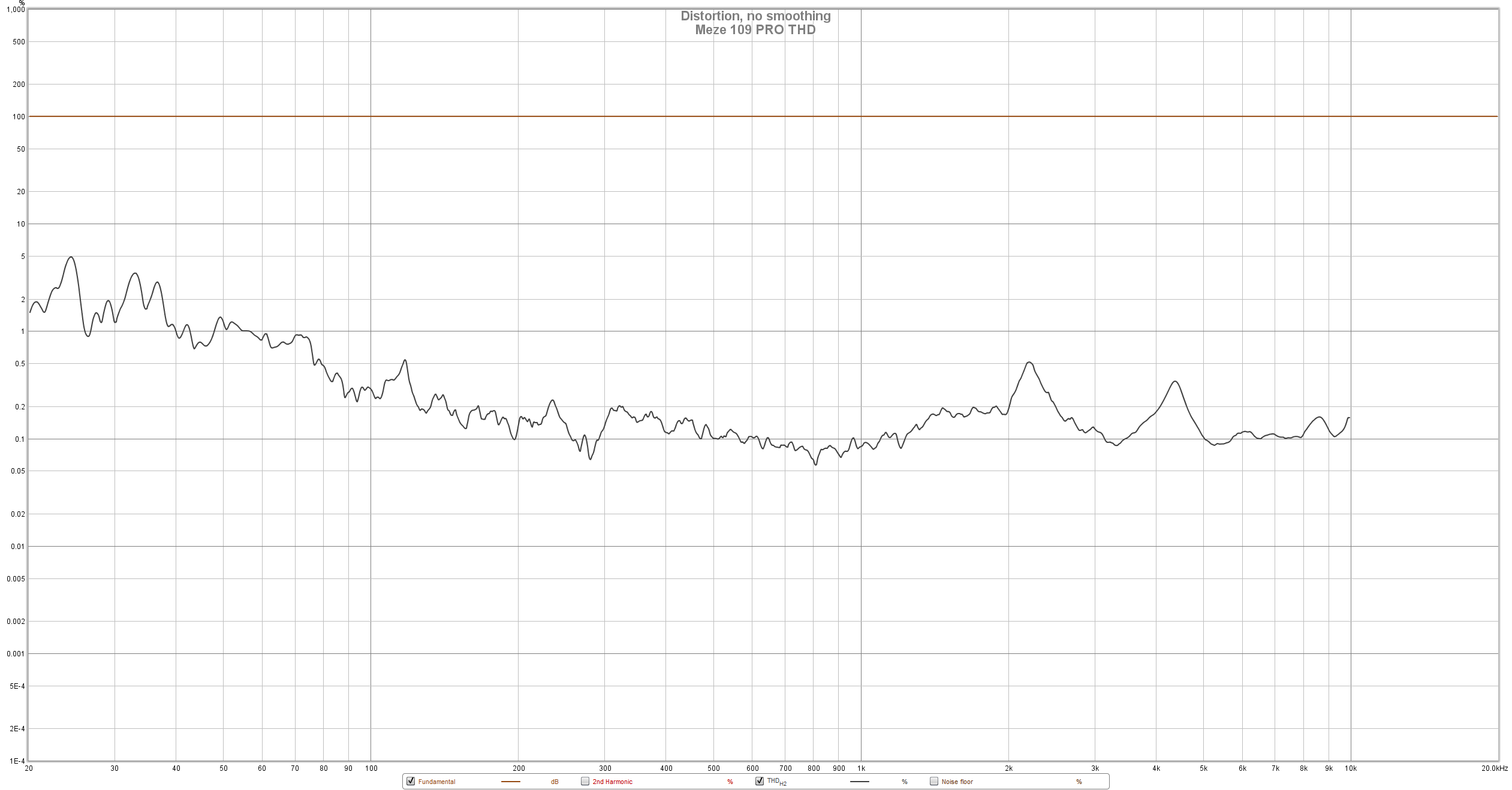
Their THD reading is great, it looks by orders of magnitude better than that of 99 Classics, reaching as high as 5% in the bass and 0.5% in the treble, but it usually stays in between 0.1 and 0.5% – which is great by my standards. There are many higher priced headphones that delivered a higher distortion, making the 109 PROs look the real deal measurement wise.

Spectral decay looks good and after sending a 300 Hz sweep tone at 84 dB, it drops to 11 dB at the lowest point and to 72 dB at the highest point after a short time frame of 160ms, usually staying in the neighborhood of 35 dB, which is still great.

Waterfall combines the FR plot and decay into a single graph, you can clearly see their FR from another angle including their impulse response, coming much closer to linearity compared to their past doings.
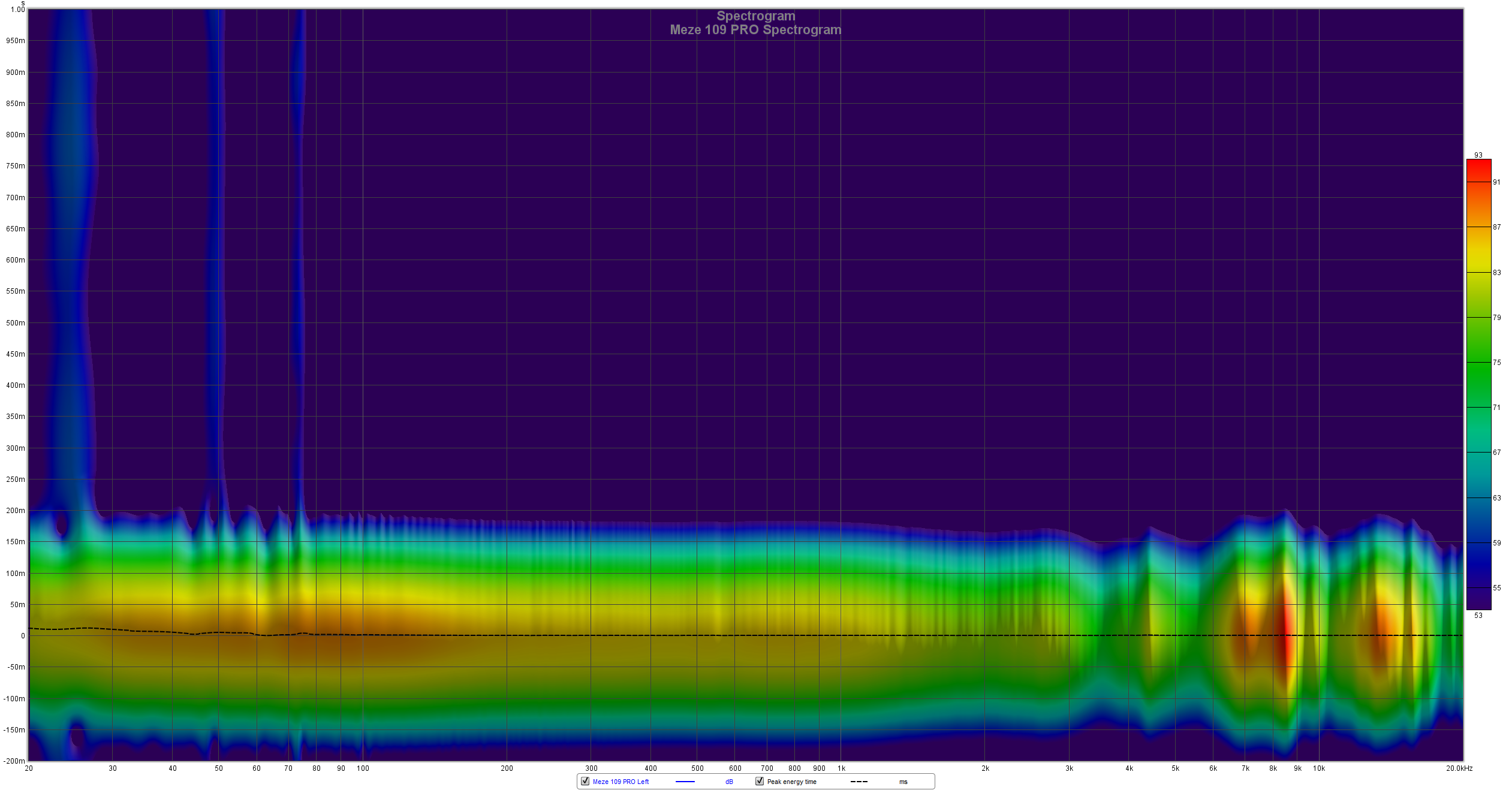
Spectrogram shows a minor ringing happening in between 20 and 30 Hz and another one at 50 Hz and 70 Hz, but I don’t see nasty distortions building up anywhere else. I cannot hear that ringing in real life and you shouldn’t worry about this too much.
Overall, I have recorded a much nicer frequency response to anything they’ve done before, it looks extended versus their former flagship headphones and measurement wise these are are truly outstanding.

X. Comparisons
A. Meze 109 PRO ($799) VS Kennerton Vali ($990)
When it comes to build quality, they both use steel frames and wooden cups and I find their build quality pretty similar. However, if I’m taking the coolness factor into consideration, then 109 PROs are looking way cooler to a plain and familiar looking Vali. Most Kennerton headphones are using these exact frames, yokes, cups and earpads, the only differences would be their grille, driver assembly and final tuning. 109 PROs have a future-fi flavor splashed all over them and these are better hugging my head. Comfort wise, both are pretty similar, but the leather earpads of Vali aren’t creating a perfect seal and I find the weight distribution good, but not great as it happens on 109 PROs. There is less pressure applied on top of my head and around my ears with Mezes, working better with smaller heads. My 9-year-old kid can’t wear the Vali, since the structure is too wide for this head, but 109 PROs are staying perfectly and I’m again crowning the 109 PROs as a more universal headphone, covering small and big heads alike.
There is such a small difference in SPL when swapping both models that I see no reason to carefully match them. MiniDSP EARS recorded a 0.9 dB difference with a 90 dB 300 Hz Sinewave, Vali being just a little bit louder, continuing my comparison without any volume adjustments.
Sound wise, Kennerton Vali have an apparent immediacy, like everything is being pushed closer to your face. Everything plays at a constant altitude and the sounds are trying to escape and fly off. In this regard, 109 PROs felt more layered, airier if you will, nicely pushing the notes all around me. Mezes are providing a bigger picture from where I’m picking the notes, like having a bigger screen in front of me. On the flipside, the immediacy of Vali creates an impression that the sound forms a stronger foundation, a stronger kick and impact, although the sound wasn’t as precise and contoured. 109 PROs are easily winning the detail retrieval contest, as there’s more of everything at play, especially in the treble region, where Vali felt muted and slightly muddy by comparison.
The fun factor is slowly scaling towards Vali as their leather pads are adding more oomph and body in the bass, but if I’m putting the same leather pads on the Mezes, then I find them equally impressive, pushing and pulling dynamics with a bigger force.
In their stock form, Vali have a higher elevation in the mid-bass and midrange region, slashing a good portion of the upper treble while cutting down small details from those regions. 109s PRO felt more complete by comparison, having smaller deviations from linearity, going with a reference rather than fun tuning. If you are mostly listening to acoustic stuff, then Vali will grab your soul more often, having a denser and meatier midrange, plus a longer vibration along the way. On the other hand, 109 PROs are working with a wider variety of music and they will definitely show the real beauty of reference recordings.
In the end, I found them marginally different and I can’t say which is better as it depends on your musical preference. I like them both for what they are, but since 109 PROs are lighter on your wallet, working with a wider variety of music, they look better, these are easier to service with home tools and are more comfortable to wear long term, I will be surely using Meze’s 109 PRO a whole lot more often. Slowly but surely, they became my son’s favorite headphones, driving them with a small USB dongle while playing YouTube music and who knows what future holds…maybe this independent publication will have a brighter future.

B. Meze 109 PRO ($799) VS Erzetich Mania V2018 ($1199)
When it comes to looks, you know what I like the most about the Erzetich Mania? Put two units near each other and they will look totally different, having different markings on their cups and small imperfections in different places. Mania, as all their headphones are hand-made and each of them Blaz Erzetich crafts personally with his own hands. They look unique and unlike anything you’ll ever see. They look scary at times; these are raw around the edges and quite unpolished if you are looking closer. At the same time, this is exactly what I love the most about them…as no matter how clumsy you are, you can drop them for a few times and they will still look as new, if you know what I mean. Mania are fully symmetrical headphones, as all their creations are, they don’t have L and R markings on their earcups as you’ll be deciding which would be your left and right earcups. There are markings on their cables, but to which cup you’ll be connecting the right connector is up to you to decide.
When it comes to comfort, I’m sorry, but once again 109 PROs are taking the lead, sitting on my head and around my ears like a plushy pillow, never asking for my attention. Mania are much heavier, putting a bigger pressure on top of my head. I can easily wear them for an hour or two, but wear them for a little longer and they will become painful. The seal is not perfect, they are wobbling a little and 109 PROs are winning another round.
I truly believe that Erzetich Phobos V.2021 (the newest revision) are some of the finest headphones you can buy right now at ~$2K, if not really The Finest headphone at this exact price point. From my own collection nothing beats them at this price and that’s why I have a huge respect for Blaz Erzetich and for everything he stands for. However, the black sheep in his portfolio is surely the open-back Mania, which I personally enjoy…even if there are several flaws which I can’t go forward without mentioning.
Mania are even warmer sounding headphones compared to Vali. Think about a headphone that never wants to offend you with strong and powerful bass kicks or with punchy snare drum hits. If there is a definition of a “rounded” headphone that cuts down huge chunks of information from the sub-bass and upper treble regions, then that’s surely Erzetich’s Mania. These are the most unusual sounding headphones from my collection, mostly because you have a massive blob of information coming at you from the mid-bass and midrange regions and close to nothing from anywhere else.
For this reason, I find them limited in the frequency response, mellow and gentle sounding, always pressing the brakes when dynamics are trying to reach their peaks. These are inoffensive sounding and will never bother you in super long listening sessions, at the cost of less impressive dynamics and detail retrieval.
Unsurprisingly, 109 PROs are considerably clearer, faster and more impactful. These will feel like costing two times the price of Mania, providing more information, a faster start and stop of the drivers and a better pin point location of the notes. I never tried the current production Mania (V.2021), but I presume they are sounding more or less the same, exactly as Phobos V.2018 was to the V.2021. In the end, we are getting a headphone that will be worn by the prince of darkness, as Mania are the darkest and warmest sounding headphones I have at my disposal, seriously limiting their use with a wider variety of music. Blaz, I love your stuff from the bottom of my heart, but I would seriously reconsider the tuning of Mania and maybe their price point. Again, you can draw your own conclusions which will better suit your needs, I will just remind you that 109 PROs are also by $400 cheaper.
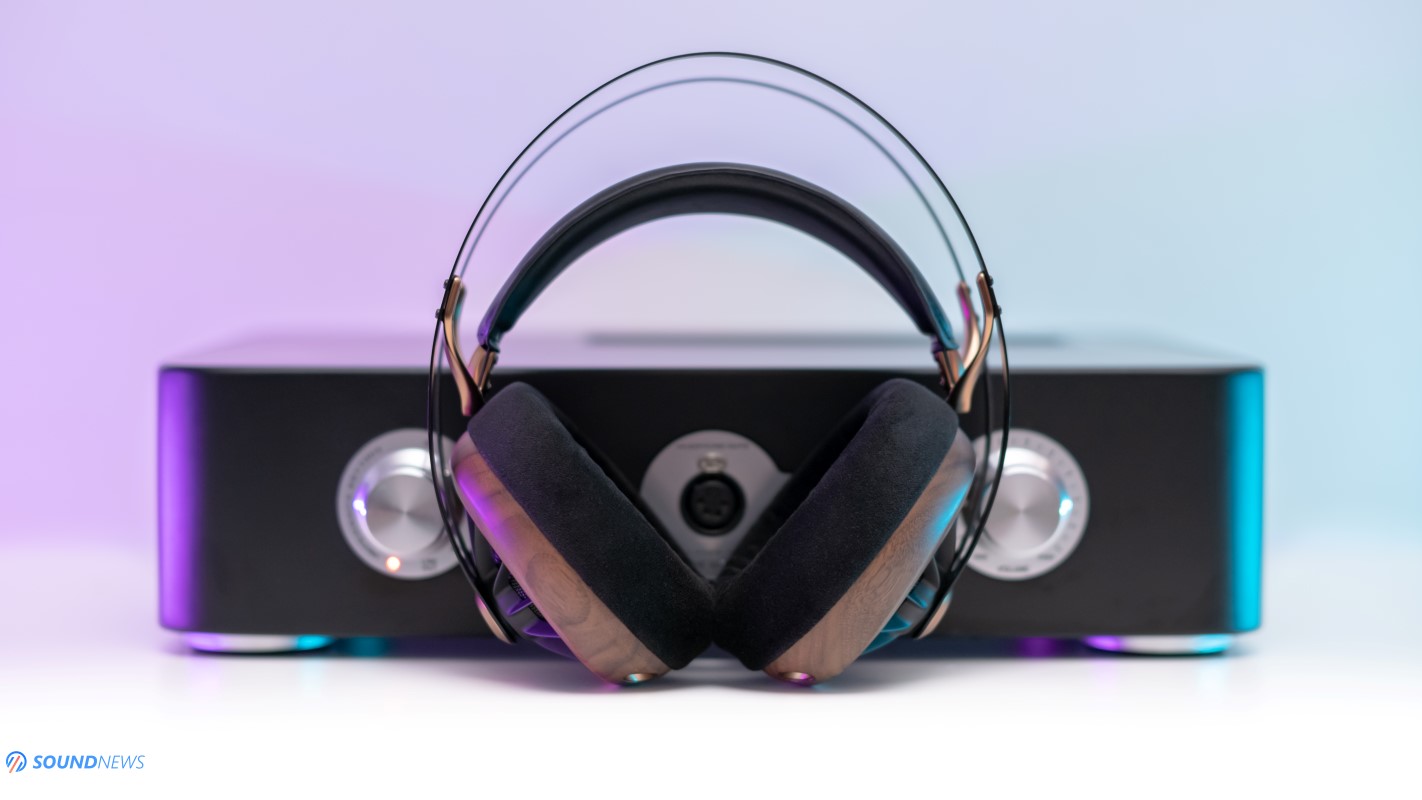
My Conclusion
I saw the very first prototypes around ~2017 when I had a secret meeting with Paul and Mircea of Meze Audio. They had clever ideas, their sketches looked beautiful and at that time they didn’t have a name, calling them open-back 99 Classics. As time passed by, everything was redesigned from the ground up compared to what I saw, developing their own headphone drivers along the way. If you check their dedicated webpage, you can feel the passion that went into making this headphone and it seems that long development times hammered down acoustic mistakes, arriving at quite a special sounding set of headphones.
Meze’s nasty team of nerdy geniuses were busy bees the whole time, releasing two flagship headphones last year and I can’t wait to know what future holds, but it’s clear that nobody can stop Meze now.
In the end, we got a great sounding and great looking headphone that won’t kill your wallet for good. Sure, these are much pricier versus 99 Classics, but at the same time everything tripled performance wise, so much so that close competitors will have a hard time beating 109 PROs at their own game. I’m glad Meze learned what transient response is and why it’s so crucial, I’m glad we got a much wider frequency response that pushed small nuances to the surface, ultimately winning me over with their excellent imaging and natural soundstage.
There’s one thing I wish Meze would develop in the future and those are leather or hybrid earpads that would make then punchier sounding with fast-paced music.
Meze’s 109 PRO are poles apart from their closed-back siblings and I don’t know a single headphone that saw such a massive performance gain. For this and many other reasons, they fully deserved our absolute highest, Gold Award!

Meze’s 109 PRO will cost you $799 and you can get them from their International & European web-store or you can get them from Apos Audio if you will. If you are already a happy head-banger, then please leave a comment below and let me know how these are treating you.
PROS:
- They look like made in Italian hyper car, I don’t know why but I see Maranello written all over them
- High-quality materials were used when crafting this headphone, I’m see these will stand the test of time
- Much bigger drivers are pushing more air towards our ear canals, improving the perception of air all around, the so called soundstage and imaging. These are quite open and wide sounding to me
- There’s a massive gain in detail retrieval, these will be shoring more nuance and texture even compared to pricier headphones and you can see just a few examples above
- The frequency response is no longer limited at both sides, as these are showing a lot more information at frequency extremes, but especially in the treble which is way more defined and textured than ever before
- I find them controlled and tight sounding, forget about the muddiness and one-note bass that was coming from their predecessors
- These are much faster to their precursors, decaying just at the right time
- A technical sounding headphone that goes with a reference tuning
- Much easier to drive than ever before, any headphone jack would do them justice
- Impressive set of measurements
- One of the best values you can have right now
CONS:
- Treble is sometimes too good to a point of becoming sharp and clinical sounding, could be problem in the long run
- Bass slam isn’t very impressive, but it can be improved with leather earpads and that’s why another set of earpads (sold separately) would solve my biggest gripe
ASSOCIATED EQUIPMENT:
- DACs: Chord Electronics Dave, Gustard R26 Discrete, Gold Note DS-10 PLUS & PSU-10 EVO, SMSL D400EX
- Streamer: Zidoo Alpha NEO
- Roon Core: Roon Nucleus
- DDCs: Denafrips Gaia, Singxer SU-6, Matrix X-SPDIF 3
- DAPs: FiiO M17, M11S, Shanling M7, M6 Ultra, Hiby RS6
- Headphone Amps: Trafomatic Primavera, Trafomatic Head 2, Ferrum OOR + HYPSOS, Enleum AMP-23R, Burson Soloist 3X GT, Flux Lab Acoustics Volot
- Preamps: Chord Ultima 3 Pre
- Power Amps: Chord Ultima 5, Burson Timekeeper 3X GT (x2)
- Loudspeakers: KEF Reference 3, Sound of Eden Crescendo UNO
- IEMs: FiiO FH9, FH7S, Meze Rai Penta, LittleDot Cu KIS, 7Hz Timeless, Kinera Skuld & others
- Full-sized headphones: Meze 109 PRO, Meze Elite, Audeze LCD-5, Audeze LCD-4, Hifiman Susvara, Hifiman HE1000SE, Arya Stealth, Sennheiser HD800S, Erzetich Phobos V2021, Erzetich Mania, Kennerton Rognir planar, Vali, Apos Caspian, Sendy Peacock, Apollo, HarmonicDyne Poseidon & others
- Interconnects: QED Reference (x2), Topping TCX1 (x2)
- USB Cables: Supra USB Excalibur (x2), Chord C-USB, Matrix Hi-Fi USB
- HDMI Cables: Supra 8K HDMI 2.1 (x2)
- Speaker cables: Kimber PR8, Audioquest Type4
- Power Cables: Isotek EVO3 Premier (x3), iFi Audio SupaNova (x2)
- Balanced Isolation Power Conditioners: PLiXiR Elite BAC1500 (stereo setup), Elite BAC400 (headphone setup)
